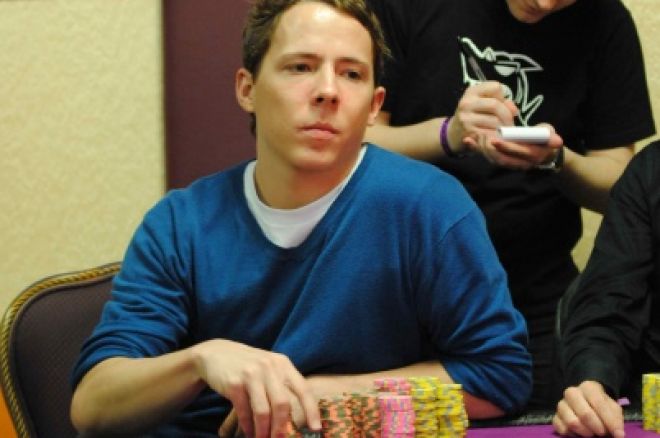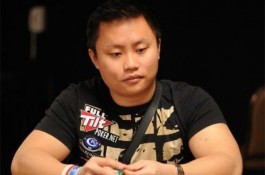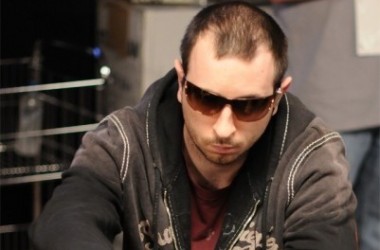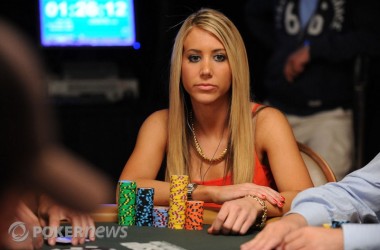Defining Polarization with Quinn Sivage

Quinn Sivage first learned poker in a home game at Brown University with the likes of Isaac Haxton and Scott Seiver. Since graduating in 2008, he's embarked on a professional poker career. With numerous nice online scores, a handful of live cashes, and keen ability to discuss strategy, Sivage shows lots of potential. He sat down with PokerNews recently to talk about what polarization is.
First of all, for those don't know, can you explain what polarization is?
Well, first I'll explain the opposite of polarizing, which is depolarizing or the old school way to talk about it, being merged. Basically, being depolarized means you are betting all of your hands, everything from your medium strength hands to your complete bluffs to the complete nuts. You are so merged because whatever you could have, you're betting. When you do this, your opponent has no idea what you have. You could have any two cards. For the most part, that whole idea of needing to seem like you could have any two cards in a spot probably gets overused. I think it's best to always have a polarized range.
So being polarized boils down to when you bet or raise, it's always either going to get called by worse hands for value or as a bluff and to make better hands fold. That's really all it is, and if you think about it, that's what good poker should be. It shouldn't be betting without any idea whether or not a better hand is going to call.
When I was learning poker, there was always this mantra that you should either fold or raise, you never want to call, you never want to check, and you want to be really aggressive. Three years ago, someone would call down with bottom pair and get owned by someone betting third pair. They'd blow up the chat and say, "Oh I'm so merged! You don't even know how merged I am right now." [Laughs] It is just not good poker. So I guess my claim is that you almost always want to be polarized.
Let's talk about different spots. First, can you discuss polarizing preflop, specifically when three-betting?
To polarize correctly, you should be three-betting with hands for value like ace-king, aces, kings, queens, and hands like nine-six suited as a bluff. You should use hands that you can't call with profitably as a three-bet bluff. So, a hand like seven-eight suited, you can call with that in position and play it profitably. That hand has value because there are a lot of things I can do with that hand postflop. I don't want to ruin it by three-betting, or getting four-bet and having to fold.
So when you are polarized and you get four-bet with a bluff hand, you don't mind folding, and when you get four-bet with a value hand, you're happy to get it in.
Yeah, exactly. Just remember to use hands that you have some value, but that you can't profitably call with as your bluffing range. So hands like ace-eight, four-five suited, things like that. People have pretty much figured this out for four-betting. It's the same concept. If you four-bet, you are doing it for value or as a bluff, so you know what you are going to do if someone shoves ahead of time. People really haven't figured this out with three-bets though. People are still doing it with nine-ten suited and king-jack offsuit. It's funny though. Three-betting nine-ten suited is a winning play, and sometimes three-betting any two cards is a winning play. You get this reinforcement, that because you're winning, it's the right play. I'm saying you'd win more with nine-ten suited if you call.
What about postflop spots? Can you talk about an example in which you need to keep this concept in mind?
Another common spot is a flop like ace-two-four, and someone check raises. Against a good player, this is a polarized spot because nobody should really be check-raising a hand like ace-queen. So when someone check raises, they really have ace-king, a set, or a bluff.
Another spot players talk about is a polarized bet on the river in "nuts or nothing" situations. Can you talk about that?
Sure. This is one of those situations where you might be facing a big bet or an all in, and because of the texture of the board, only one or two hands can bet for value, and all others are bluffs. That means the bet is either the nuts or nothing. It's funny, a lot of players will call down with a hand against a nit who three barrels on an ace-dry board and say to themselves, "Well, it's the nuts or nothing. Since the nuts is a set and it's hard to have a set, I call." Then the other player will show a set. They never stop and think about how that guy is never doing that with air. For the longest time, people would just pat themselves on the back for the call because they just think well, it's the nuts or nothing, and there are way more nothings, so I called.
What advice would you give to players who are new to this concept and want to get better at polarizing their rainge? Can you sort of explain the thought process necessary?
What I would say is, before you make a raise or bet, ask yourself, "Am I doing this for value or am I doing this as a bluff? Am I trying to get better hands to fold or am I trying to get worse hands to call?" Instead of asking yourself, "Do I have the best hand?" Ask yourself, what better hands can I get to fold or what worse hands can I get to call?" Do this before you click that right button (raise button). If the answer is, "No hands," then you have to click the middle button which is check or call. Or fold if you were thinking about bluff raising. It sounds simple, but a lot of players mess it up.
We know it sounds hard to believe, but you really can get a free poker bankroll without having to deposit or give your bank details. Check out our exclusive $50 Free No Deposit Sign Up Bonus from PartyPoker.








